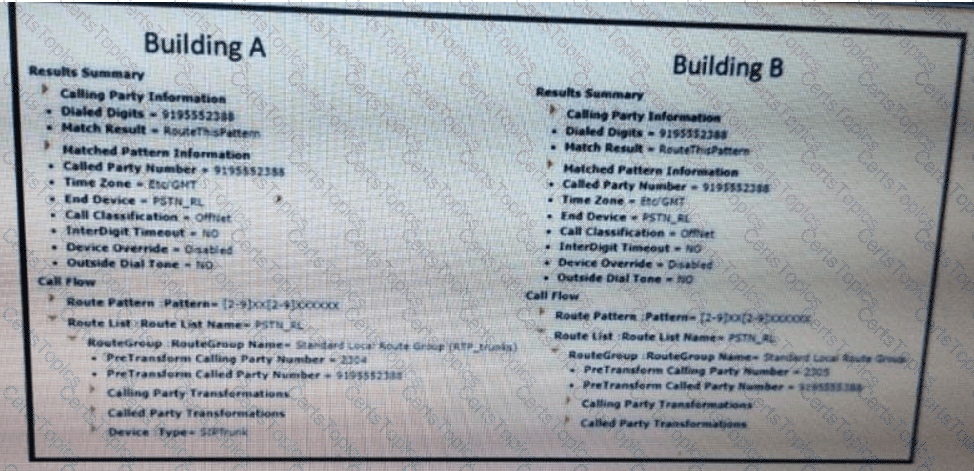An organization needs to ensure that the Cisco UCM can provide a resume softkey to users on their desk phones when they disconnect an anchored call on their mobile phone. Which solution must be used to accomplish these goals?
Cisco SIP IP telephony is implemented on two floors of your company. Afterward, users report intermittent voice issues in calls established between floors. All calls are established, and sometimes they work well, but sometimes there is one-way audio or no audio. You determine that there is a firewall between the floors, and the administrator reports that it is allowing SIP signaling and UDP ports from 20000 to 22000 bidirectionally. What are two possible solutions? (Choose two.)
Which description of RTP timestamps or sequence numbers is true?

Refer to the exhibit. A standard local route group is configured for long-distance calls. Calls from building A succeed, but calls from building B fail. On the system. Each building has is own device pool. The DNA tool is used to test the configuration. How is this issue resolved?